
Admiral of the Fleet George Anson, 1st Baron Anson, was a Royal Navy officer. Anson served as a junior officer during the War of the Spanish Succession and then saw active service against Spain at the Battle of Cape Passaro during the War of the Quadruple Alliance. He then undertook a circumnavigation of the globe during the War of Jenkins' Ear. Anson commanded the fleet that defeated the French Admiral de la Jonquière at the First Battle of Cape Finisterre during the War of the Austrian Succession.
Admiral of the Fleet The Hon. George Clinton was a Royal Navy officer and politician. Benefiting from the patronage of Thomas Pelham-Holles, 1st Duke of Newcastle, he served as a naval captain during the 1720s and 1730s.

Admiral Sir Charles Saunders was a Royal Navy officer. He commanded the fourth-rate HMS Gloucester and led her in action at the Second Battle of Cape Finisterre in October 1747 during the War of the Austrian Succession. After serving as Commander-in-Chief, Mediterranean Fleet, he was appointed Commander-in-Chief, English Channel in charge of the Western Squadron between October 1758 and May 1759). He took command of the fleet tasked with carrying James Wolfe to Quebec in January 1759 and consolidated the dead general's victory after the Battle of the Plains of Abraham in September 1759 by devoting great energy to keeping the British Army, now under the command of Colonel George Townshend, well supplied during the Seven Years' War. He later became Senior Naval Lord and then First Lord of the Admiralty.
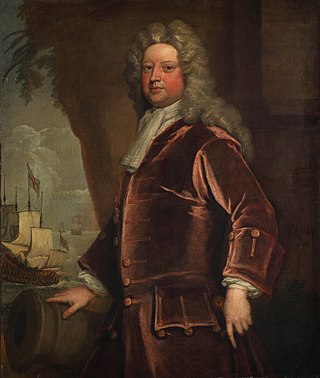
Admiral of the Fleet Sir John Norris was a Royal Navy officer and Whig politician. After serving as a junior officer during the Nine Years' War and the Williamite War in Ireland, he was given command of a squadron sent to North America to protect British settlements on the banks of Hudson Bay in 1697. Although he developed a plan to recapture some territories in Newfoundland and Labrador taken by French forces the previous winter, he was prevented from implementing that plan when the local council overruled him.

The Commander-in-Chief, The Nore, was an operational commander of the Royal Navy. His subordinate units, establishments, and staff were sometimes informally known as the Nore Station or Nore Command. The Nore is a sandbank at the mouth of the Thames Estuary and River Medway.
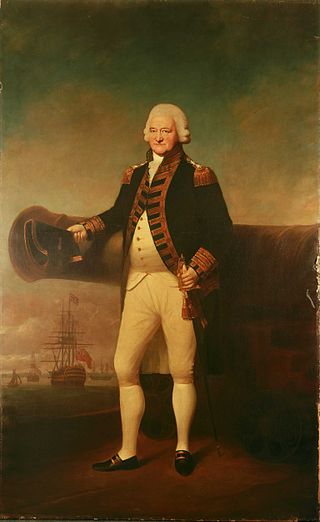
Admiral of the Fleet Sir Peter Parker, 1st Baronet was a Royal Navy officer. As a junior officer, he was deployed with a squadron under Admiral Edward Vernon to the West Indies at the start of the War of Jenkins' Ear. He saw action again at the Battle of Toulon during the War of the Austrian Succession. As captain of the fourth-rate HMS Bristol he took part in the Invasion of Guadeloupe during the Seven Years' War.
Admiral Vere Beauclerk, 1st Baron Vere, known as Lord Vere Beauclerk until 1750, was a Royal Navy officer, British peer and politician who sat in the House of Commons for 24 years from 1726 to 1750. After serving various ships in the Mediterranean and then commanding the third-rate HMS Hampton Court, he joined the Board of Admiralty, ultimately serving as Senior Naval Lord.

Admiral of the Fleet Sir Chaloner Ogle KB was a Royal Navy officer and politician. After serving as a junior officer during the Nine Years' War, a ship he was commanding was captured by three French ships off Ostend in July 1706 in an action during the War of the Spanish Succession.
Vice-Admiral Sir Peter Denis, 1st Baronet was an English naval officer and Member of Parliament.
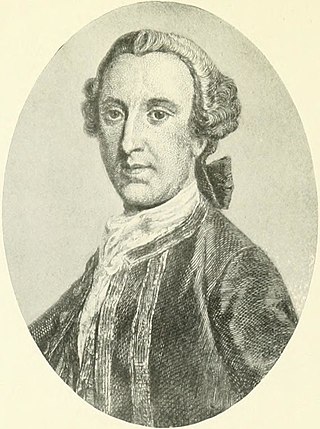
Admiral Sir Peircy Brett was a Royal Navy officer. As a junior officer he served on George Anson's voyage around the world and commanded the landing party which sacked and burned the town of Paita in November 1741. During the Jacobite rising Brett saw action on 9 July 1745, when as captain of the fourth-rate HMS Lion he exchanged fire with the French ships Elizabeth and the Du Teillay: the Du Teillay at the time was carrying Charles Edward Stuart to Scotland with supplies and funds to support his cause. Brett also commanded the third-rate HMS Yarmouth at the First Battle of Cape Finisterre in May 1747 during the War of the Austrian Succession. He commanded HMS Cambridge on the North America and West Indies Station during the Seven Years' War and later became Senior Naval Lord. He was also a Member of Parliament, representing the constituency of Queenborough from 1754 until 1774.

Admiral of the Fleet John Forbes, styled The Honourable from 1734, was a Royal Navy officer. After taking part in an expedition to Lisbon to support the Portuguese in the face of a Spanish threat, he saw action as captain of the third-rate HMS Norfolk at the Battle of Toulon during the War of the Austrian Succession. He was one of the few captains who really bore down on the enemy.

Admiral of the Fleet Sir William Rowley KB was a Royal Navy officer. He distinguished himself by his determination as commander of the vanguard at the Battle of Toulon in February 1744 during the War of the Austrian Succession. He went on to be Commander-in-Chief of the Mediterranean Fleet in August 1744 and successfully kept the Spanish and French fleets out of the Mediterranean area but was relieved of his command following criticism of his decision as presiding officer at a court-martial.
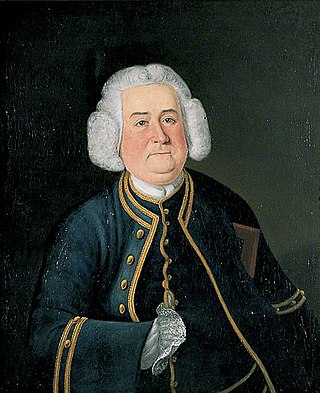
Captain William Boys was a Royal Navy officer who became Commander-in-Chief, The Nore.
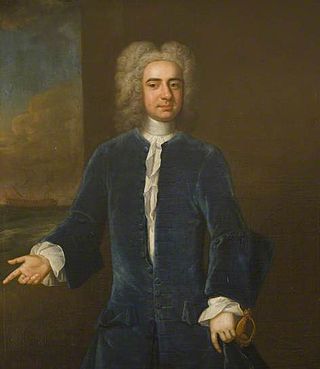
Vice-Admiral Thomas Davers was a Royal Navy officer who served as Commander-in-Chief of the Jamaica Station.
Admiral Robert Man (1721–1783) was a Royal Navy officer. He commanded the third-rate HMS Lancaster at the siege of Louisbourg in June 1758 during the French and Indian War. He went on to become commander-in-chief of the Leeward Islands Station, then Commander-in-Chief, Mediterranean Fleet and finally First Naval Lord.
Commodore Thomas Warren was a Royal Navy officer who became Commander-in-Chief, Portsmouth.
Captain Sir Richard Hughes, 1st Baronet was a Royal Navy officer of the eighteenth century who served as Resident Commissioner of Portsmouth Dockyard. Hughes joined the navy in 1721 and served on a variety of ships, some commanded by his father Captain Richard Hughes, mostly in the Mediterranean Sea and Baltic Sea, and was also a some-time follower of Admiral Sir John Norris. He was promoted to commander in 1739 and given command of HMS Anne Galley, and was promoted to post-captain in the following year. Having served mostly in command of ships in the Mediterranean Fleet, Hughes was given command of the guardship HMS Fougueux in 1753, from where he was appointed Resident Commissioner of Portsmouth in 1754. He served there until 1773, in which year he was created a baronet and then retired. He died at Southampton, aged 71.
Vice-Admiral George Mackenzie was a Royal Navy officer who served as Commander-in-Chief, The Nore from 1774 to 1775.
Commodore William Saltern Willett was a Royal Navy officer who served as Commander-in-Chief, The Nore from 1766 to 1769.
Vice-Admiral Perry Mayne was a Royal Navy officer who served as Commander-in-Chief, The Nore from 1746 to 1747.










